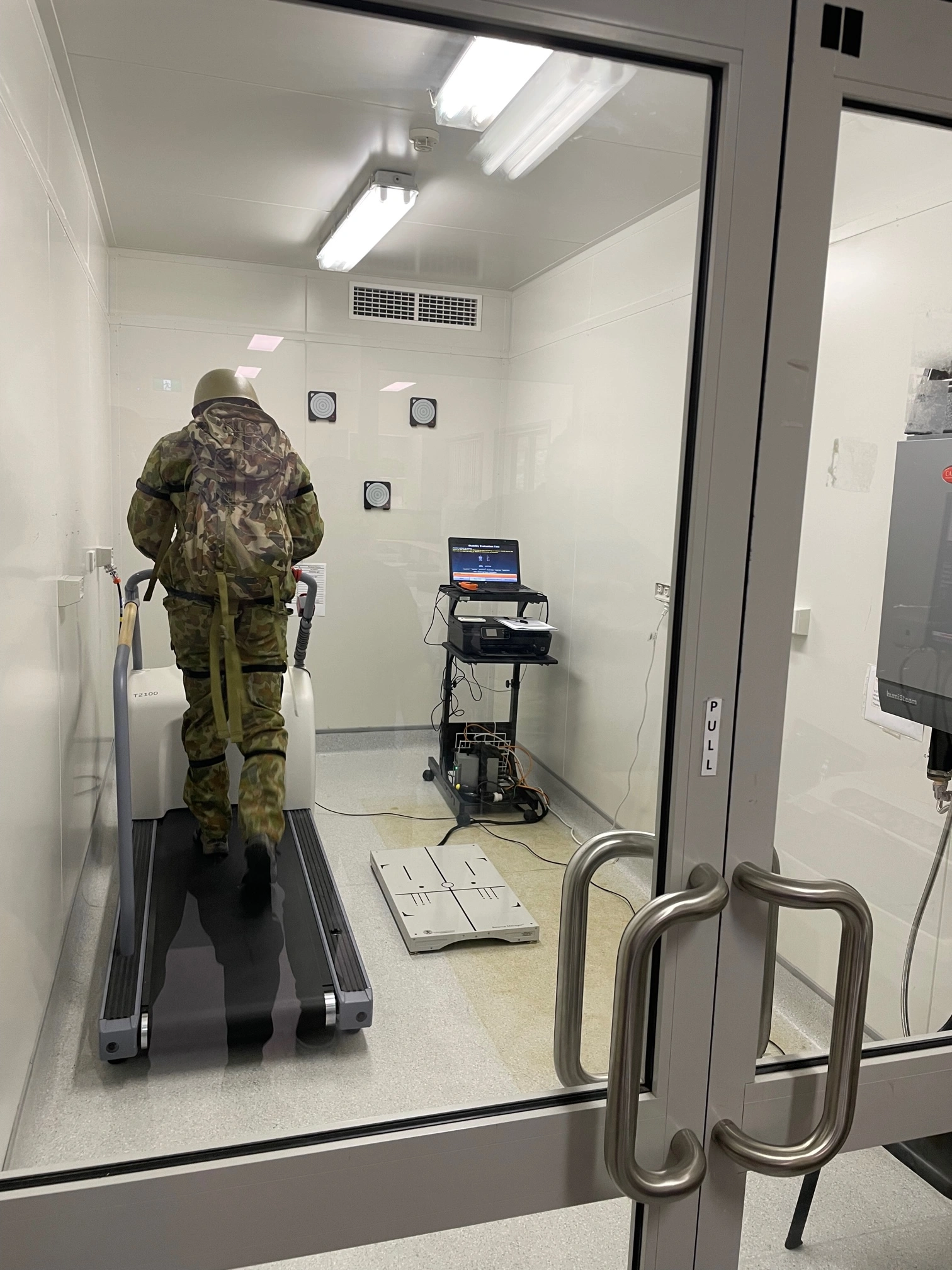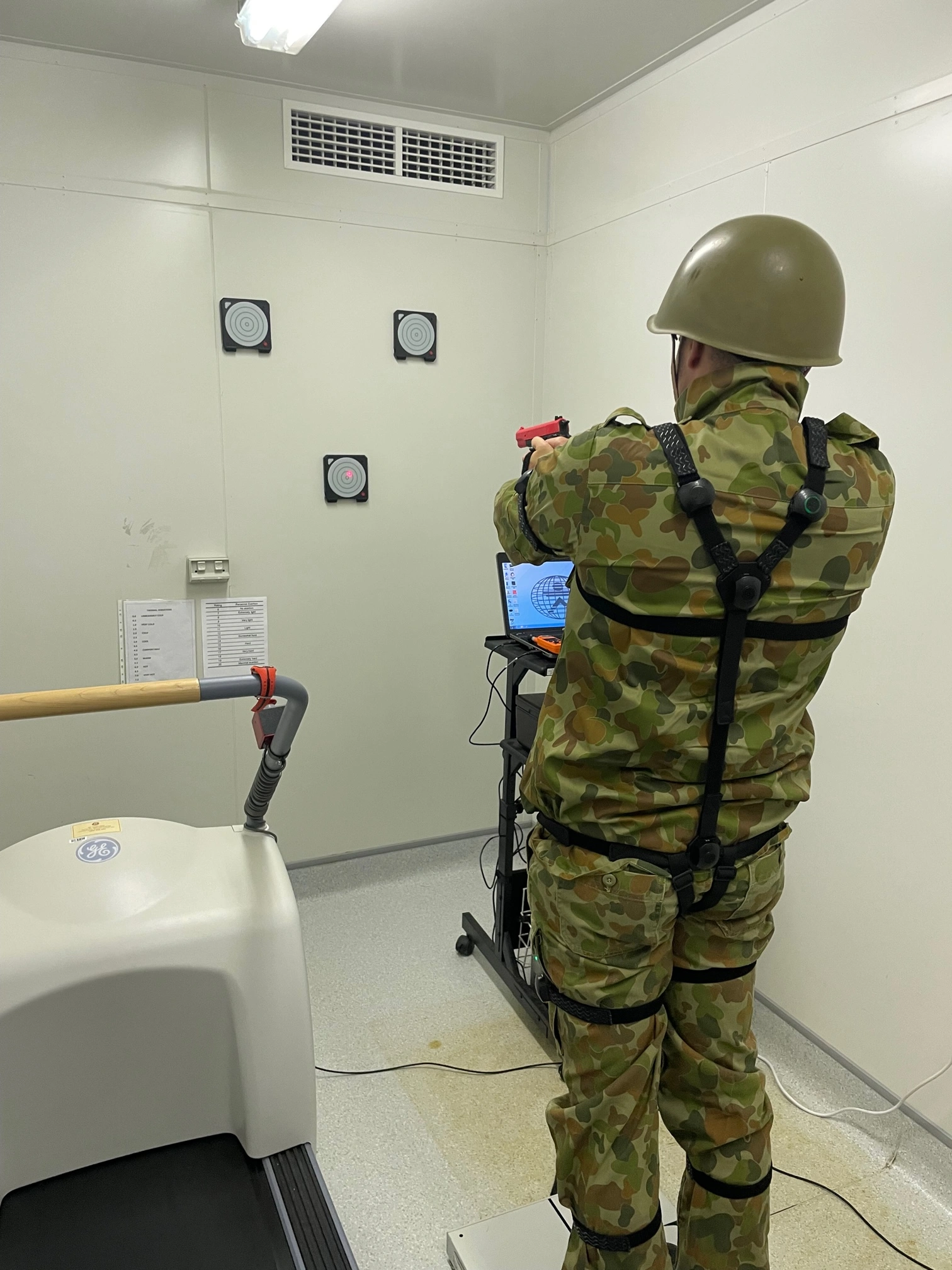Fellow: Professor Frank Marino
Research overview: Hydration impacts on a soldier's performance in warfighting situations
Fellowships awarded: 2016 and 2022
Importance to Australia. My research provides military policymakers with Australian data on the effects of hydration on a soldier's performance. This research has the potential to transform current military hydration policies and potentially lead to a reduction in the volume of water soldiers need to carry. It will also provide a better understanding of the impacts of hydration on firing accuracy. This area of research is important to keeping Australia resilient and in maintaining our warfighting edge.
What inspired you to pursue this area of research?
My research started with an investigation into the impacts of hydration on the human body. I have recently expanded the research to include the effects of hydration on posture and firing accuracy.
Currently, the information we use to measure the hydration needs of our soldiers is based on data that we have acquired from the United States of America.
I feel it is important that we have our own data, to reflect our Australian context and conditions, particularly as our soldiers will not always be serving with US forces. It is important to determine the impacts of hydration on our soldiers' performance, based on an Australian experience of conflict and our Australian military requirements.
Much data includes the cultural biases of different countries, which skews the results. These biases have the potential to impact hydration policies, which, in turn, could impact our soldiers' performance, based on the amount of water they must carry and drink.
How does your research address existing gaps and challenges in your specialist field?
There are many gaps and challenges with measuring the precise impacts of hydration issues on a person's performance.
Thirst has evolved over millions of years to regulate the hydration needs of all living things, including humans.
One element of my research is to interrogate if our thirst mechanism is a sufficiently accurate measure of our hydration needs to determine how much water is enough. After all, cats and dogs instinctively know when they need additional water; we don't tell them when to drink. Despite this extensive evolutionary timeline, in the last 30 years, humans have stopped trusting our natural thirst mechanisms in favour of continuous hydration. This has largely come about with the influence of sports drinks on our drinking habits and economic drivers overtaking our natural indicators of hydration need.
This contrasts with the advice given to medical staff of 'nil by mouth' for up to 12 hours, for patients with specific health conditions, or prior to an operation. However, we insist that fit athletes drink regularly when exercising.
Returning to the healthcare example. To determine the patient's hydration needs, the health care team measure the patient’s decision-making capabilities over 12 hours, to check their cerebral processes. If the patient can answer questions asked by the surgeon, they are deemed well enough to make decisions about how much water they need and when to drink it.
The research I am conducting into the impact of hydration on warfighters has application across other sectors, providing benefits more broadly.

How will your research contribute to Australian sovereign capabilities and defence innovation?
The question we ask is: does the amount of water you carry into battle change your performance?
If you don't need to carry as much water, you carry less overall weight, or you can carry more ammunition. Knowing how much water is enough, not enough, or too much enables leaders to make informed decisions, based on Australian experiences and Australian conditions.
What does the Spitfire Memorial Defence Fellowship (SMDF) and the funding awarded to you mean to you and your research?
I have received two Fellowships, for which I am extremely grateful. This has enabled me to expand my research into the impacts of hydration and fatigue on posture and a soldier's ability to shoot accurately.
What is wonderful about the Spitfire Memorial Defence Fellowship is the freedom for researchers, like me, to do the research the way we feel is best and to be able to focus on real issues and apply the results of the research to real life.
The Spitfire Memorial Defence Fellowship means the research is not limited by the rules and reporting obligations of many other grants and research funding methods. It is unusual for a grant of funds to be so free of restrictions. As far as I am aware, this is unique.
I have used the Spitfire Memorial Defence Fellowship funds to publish the results of my research. Plus, one of my PhD students has built a career out of his experience in working with me on this hydration research.
The expanded research that I am now conducting involves an Honours student, and an early career researcher.
This means that for a small amount of money provided as a Fellowship, it has a big reach, and a multiplier effect. My Fellowships have provided opportunities for the students working with me to develop their careers, as well as enabling me to further my research.

What else you would like to share about your work and its significance?
While the focus of my research is very much on a soldier's hydration (water) needs while in the field, I have recently expanded the research to include the effects of hydration on posture and firing accuracy. Firing accuracy is measured using a simulated laser pistol. Posture is measured using a balance platform, which measures the degree of posture sway.
I have now also added a measure of fatigue to the research. This involves new methods to determine a soldier's degree of fatigue, such as using transducers on the molar to measure the soldier's bite force and the level of inhibition in shooting a target. The brain and jaw are wired differently and so this is a good indicator of fatigue levels and their impacts on shooting accuracy and response times.
The purpose of this element of the research is to find out whether a soldier's inhibition increases as they become more fatigued, and more stressed. We are measuring the soldier's motor control, to determine what impacts fatigue has on the soldier's performance.
I have enlisted the support of a motor control specialist in my team. This is complex research that needs this specialist expertise, and the time to fully prepare each soldier involved in the tests.
The research process
We install sensors over the soldier's battle dress before they enter a climate chamber, where the tests are conducted. The soldier is asked to march for 20 minutes, then stop, and fire at the target. At which point we measure the soldier's posture.
The climate chamber is used to measure the soldier's performance under different environmental conditions. Tests are conducted at 30 degrees Celsius, with 50 percent hydration. The tests are conducted twice; once with water and once without. This allows us to see the impacts in real-time.
Each set of tests requires: two lots of 3-hours per person, plus time to calibrate, and re-calibrate the measuring equipment. Each soldier involved in the trial is presented with 9 targets, which they shoot 11 times. Every second during each trial, the soldier's body and skin temperature is measured.
I want to further expand the research to ensure women are included, to allow for differences in physiology. Currently, all available data is based on male participants. So, I am extending the data gathering timeframe to include the results from female participants.
Completing the data gathering for my research was delayed due to COVID. However, once we complete the data gathering stage, I intend to analyse and present the results to a conference in Italy in July 2025.

Articles and Links
Some examples of my research publications follow:
Thirst perception exacerbates objective mental fatigue; Goodman and Marino 2020.


